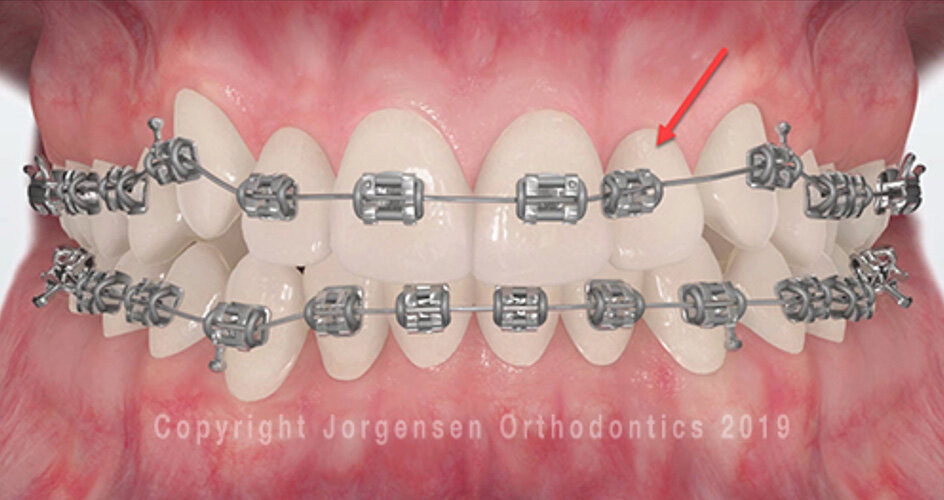Orthodontic Emergencies: Problems With Your Braces
If you’ve got braces in your mouth, you’re eventually going to have an emergency. An orthodontic emergency occurs when something doesn’t go exactly as expected. The most common orthodontic emergencies are those related to problems with the braces themselves.
Braces rub against your mouth
The most common orthodontic emergency occurs when a part of the braces rubs against the lips, cheeks, or tongue. This could be a wire, a steel ligature tie, the edge of a band or bracket, or some other gadget that your orthodontist has placed into your mouth. Even if everything is OK with your braces, you can expect some discomfort as your lips, cheeks, and tongue become acclimated during your first month. Similar to when you fall and scrape your knee, your mouth will toughen up (callous) during the first month and the braces will be more comfortable for the rest of your treatment. Your orthodontist will provide you with soft wax that you can place over the part of the braces that is irritating you. Use it only after you develop a sore to allow healing. Using it preemptively will not allow the mouth to toughen up and you’ll be uncomfortable your entire treatment.
Wires shift and poke
Wire-poke emergencies occur when a part of your braces sticks out or is too long and irritates your mouth. Even if you can place wax over these irritations, if they are sticking out too far, they need to be fixed. Sometimes you can tuck the end of a flimsy wires or steel ligature tie up against your teeth with the eraser of a pencil. If you can’t eliminate the poke yourself, or it the wire sticking out the back of your braces is too long, you’ll need to get in to see your orthodontist on the next business day. Place wax over the poke until you can get it fixed.
Braces come unglued
The second most common problem is a loose bracket or band. If you have a problem within the first 24 to 48 hours of getting your braces on, it is probably due to an issue with the bond between the bracket and the tooth or it may be that a tooth in one arch is hitting a bracket in the other arch and dislodging it. In either case you need to call your orthodontist and get the loose bracket fixed within a day or two. If your braces have been on for a while and a bracket comes loose, you probably ate something hard or sticky that caused the problem. Your orthodontic team gave you instructions at the beginning of your treatment regarding the kinds of foods and habits to avoid while wearing braces. The more compliant you are with those guidelines, the faster your treatment will go. You should inspect your braces every night after you brush to make sure they are in good repair. Signs that something is loose include a bracket which moves on the wire or the obvious movement of a tooth that was once straight (i.e. one tooth gets longer than those next to it or it moves in front of or behind the adjacent teeth).
Your chain or o-rings break or come off
Losing an O-ring or having a chain break are both emergencies that need to be dealt with within a couple days of being discovered. Do not wait for your next appointment! Not only do chains and O-rings move the teeth, they also attach the brackets to the wires. O-rings and chains are easily replaced. The changes that will occur if they are not replaced can add months to your treatment. Inspect each tooth to make sure there is something attaching it to the wire when you are checking for loose brackets each night. Although some orthodontic emergencies cause discomfort, missing O-rings and broken chains do not. Don’t wait until your teeth get crooked again before coming in to get your braces repaired.
NOTE: The author, Dr. Greg Jorgensen, is a board-certified orthodontist who is in the private practice of orthodontics in Rio Rancho, New Mexico (a suburb on the Westside of Albuquerque). He was trained at BYU, Washington University in St. Louis, and the University of Iowa in the United States. Dr. Jorgensen’s 25 years of specialty practice and nearly 10,000 finished cases qualify him an expert in two-phase treatment, extraction and non-extraction therapy, functional orthodontics, clear aligners (Invisalign), and multiple bracket systems (including conventional braces, Damon and other self-ligating brackets, Suresmile, and lingual braces). This blog is for informational purposes only and is designed to help consumers understand currently accepted orthodontic concepts. It is not a venue for debating alternative treatment theories. Dr. Jorgensen is licensed to diagnose and treat patients only in the state of New Mexico. He cannot diagnose cases described in comments nor can he select treatment plans for readers. Please understand that because he has tens of thousands of readers each month, IT IS IMPOSSIBLE FOR HIM TO RESPOND TO EVERY QUESTION. Please read all of the comments associated with each article as most of the questions he receives each week have been asked and answered previously. The opinions expressed here are protected by copyright laws and can only be used with written permission from the author.

